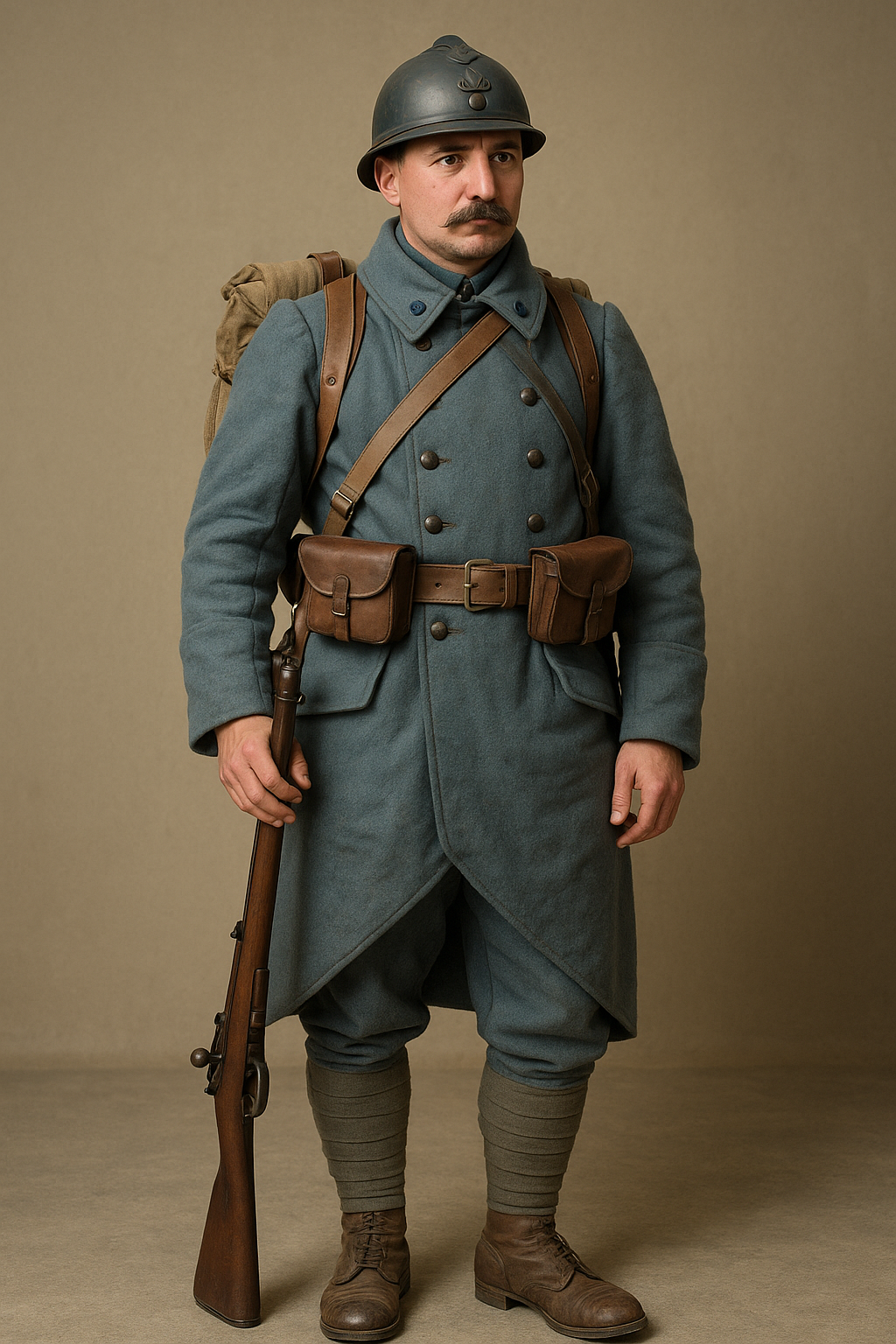
Why Did the French Use Bright Blue Uniforms in WW1? History, Strategy & Lessons
Published on Sep 22, 2025
Introduction: A Battlefield in Blue
Imagine charging into battle wearing a bright blue greatcoat with bold red trousers — while facing enemies armed with machine guns and camouflaged uniforms. It sounds like a recipe for disaster, right? Yet this was the reality for French infantry in the early days of World War I.
Here's a surprising statistic: France suffered nearly 27,000 casualties in a single day — August 22, 1914 — many of them wearing their iconic blue and red uniforms. That day remains the bloodiest in French military history, largely due to outdated tactics and uniforms that made soldiers easy targets.
So, why did the French use bright blue uniforms in WW1 despite modern threats? Let’s unravel the cultural pride, outdated strategy, and industrial limitations that shaped one of the most iconic — and controversial — military outfits in history.
The Origins of the WW1 French Uniform: Tradition Over Tactics
A Nod to Military Pride and National Identity
Before World War I, French military uniforms were deeply rooted in tradition. The classic look — blue greatcoat, red trousers — symbolized national pride, reminiscent of France's military might during the Napoleonic era.
- Color Symbolism:
- Blue: Associated with loyalty, bravery, and the French monarchy.
- Red trousers: A leftover from the 1829 uniform redesign, intended to make French soldiers visually striking and dignified.
This uniform wasn't just for show — it was a statement of France’s historical power. Many French generals and politicians believed that abandoning these bold colors would lower morale.
Political and Industrial Factors
- The Minister of War, Adolphe Messimy, proposed switching to a more modern, muted uniform (a grey-blue “horizon blue”) in 1912.
- The plan was rejected due to resistance from the French public and press, who saw drab colors as “unpatriotic.”
- France also lacked sufficient supplies of the new dyes, especially as WW1 disrupted trade routes and slowed textile production.
The Fatal Consequences on the Battlefield
Visibility in Modern Warfare
By 1914, warfare had evolved:
- Camouflage and trench warfare were becoming the norm.
- Armies like Germany had adopted field grey (Feldgrau), which blended into the landscape.
- Meanwhile, French soldiers in bright blue coats and red trousers stood out like targets in open fields.
This visibility led to catastrophic losses, especially during the Battle of the Frontiers, where tens of thousands of French soldiers were gunned down in open terrain.
French Casualties in WW1
- Over 1.3 million French soldiers died during World War I.
- Many of these casualties occurred in the first year, when outdated uniforms and tactics were still in use.
- August 22, 1914, saw 27,000 French deaths in a single day, a haunting testament to how poorly the French uniform fit the modern battlefield.
🔍 FAQ: How many French soldiers died in WW1?
Answer: Around 1.3 to 1.4 million — one of the highest military death tolls of any nation involved.
When Did the French Army Switch Uniforms in WW1?
The Shift to Horizon Blue
By late 1914, the French military could no longer ignore the issue. After massive casualties and international criticism, a change was made.
- Horizon Blue Uniform:
- Introduced in 1915.
- A blend of blue and grey that helped soldiers blend into the misty European battlefields.
- Made of cheaper, more accessible dyes like synthetic indigo.
- The new uniform also featured:
- A simpler, more practical cut.
- Less visible insignia and brass, reducing the shine that could give away a soldier’s position.
- The famous French WW1 greatcoat, now duller and longer for protection and warmth in trenches.
Actionable Takeaways for History Buffs and Collectors
1. Understanding Context Enhances Collection Value
If you collect military uniforms or equipment, understanding the evolution of the WW1 French uniform gives you better insight into:
- The era’s military strategies.
- Cultural symbolism.
- The transition from tradition to practicality.
2. Beware of Common Pitfalls in Uniform Identification
- Don’t confuse pre-1915 uniforms with later "horizon blue" versions.
- Authenticity checks should include:
- Fabric type (wool vs synthetic blends).
- Color tone (bright ultramarine vs muted grey-blue).
- Buttons and insignia styles (brass vs stamped steel).
3. French WW2 Uniforms: A Different Evolution
WW2 saw a more modern, subdued uniform approach:
- Khaki and olive drab became standard.
- More focus on modular gear, helmets, and camouflage.
- Lessons from WW1 directly influenced French WW2 uniforms, especially regarding protection and stealth.
🧠 Tip: If you're interested in both wars, compare the WW1 and WW2 French uniforms side-by-side to see how doctrine and equipment evolved.
Current Trends in Military History and Uniform Interest
- Military cosplay and reenactment groups are increasingly accurate, demanding period-accurate reproductions down to the button style.
- Digital museums and 3D scanning of historical uniforms are booming, allowing virtual tours of French WW1 equipment.
- Resellers and collectors are now prioritizing provenance and contextual documentation, increasing the value of authentic WW1 French uniforms.
Conclusion: From Bold Pride to Battlefield Reality
The story of the WW1 French uniform isn’t just about color — it’s about a nation grappling with modern warfare, torn between tradition and survival.
The bright blue greatcoats and red trousers were worn with pride, but ultimately became symbols of outdated thinking in an era where camouflage, cover, and mobility were king.
Yet the lessons learned were invaluable. By the war’s end, France had transformed its military doctrine, uniform design, and strategic outlook — changes that carried over into French WW2 uniforms and beyond.
